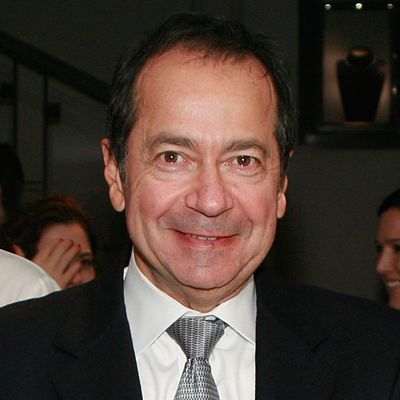
Imagine: You’re a baseball player. You have the highest salary on your team, but your batting average is below .200, and you’ve struck out swinging in 90 of your last 100 at-bats. And yet, day in and day out, your coach refuses to bench you. In fact, he says, he’s planning to give you a better contract next year.
This is roughly where hedge funds find themselves, in the grand scheme of Wall Street. Most funds are struggling to earn their hefty fees, and their turbo-charged, exotic trading strategies are doing much worse than basic stock indexes. New regulations have forced funds to be more transparent (an annoyance for an industry that has always prided itself on secrecy), and a years-long insider trading investigation of several prominent fund managers has put the entire industry on edge.
And yet, here in Las Vegas, at the fifth annual SALT hedge-fund conference, nobody is fretting. Nor should they be. Because, as it turns out, even a hedge-fund industry in decline does pretty well for itself.
It’s no secret that hedge funds have had a terrible year. The Barclays Hedge Fund index shows that funds are up only 4.6 percent this year, compared to the S&P 500’s 15 percent gain over the same period. For investors who pay exorbitant fees for the privilege of investing in hedge funds — typically, funds charge “2-and-20,” or 2 percent of assets under management, plus a 20 percent cut of profits — it shouldn’t be acceptable that these funds are performing only a third as well as a basic stock index you could buy through an eTrade account.
And yet, investors aren’t up in arms. Hedge funds took in $817 million in new money last month — not as much as previous months, but still a vote of confidence. Managers like John Paulson, who has lost a staggering $9.4 billion of his investors’ money in the last two years, are still in business and charging their usual fees. The ability of the hedge-fund industry to keep thriving, despite its high-profile problems, is so baffling that even hedge-fund managers wonder how they’ve made it work.
“I keep waiting for fees to go down, but they’re only going up,” said one hedge-fund-industry veteran, Jane Buchan.
What’s the hedge-fund industry’s secret? And how has it managed to make itself basically bulletproof, even in times of weak returns?
The key to answering those questions is that pension funds — the giant public investors that provide the biggest sources of money in most hedge funds — are doing even worse than hedge funds are. Many pensions are badly underfunded as a result of losses sustained during the financial crisis, and are struggling to fulfill their obligations to the firefighters, teachers, police officers, and other public employees whose retirement money they safeguard. Pension managers are supposed to make a certain amount of money every year — usually a target rate of 6 to 8 percent — and they’ve been convinced over the years that investing with hedge funds and private-equity firms will help them pull that off.
“The biggest challenge is waking up in the morning and wondering how to meet that 8 percent target,” said one pension manager, John D. Skjervem, who oversees the state of Oregon’s main pension funds, at a SALT panel this week.
Much of the hedge-fund industry’s success in pension-land is owed to a massive, successful marketing push. For decades, hedge-fund consultants have turned up at pensions’ doors, offering them stakes in hedge funds that, they are told, can make them tons more money than plain vanilla investments like mutual funds. And pension managers have bought the pitch, largely because they don’t have many other options for high-return investments.
“Where else are pensions going to go?” one hedge-fund worker, kicking back in a poolside cabana, told me this week. “They’re so underfunded that they have to swing for the fences.”
Pensions do have some worries about hedge funds. Aeisha Mastagni, an investment officer with the giant California teacher’s pension CalSTRS, said on a panel this week that pension managers needed to be wary of hedge funds that could attract negative media attention for being invested in controversial industries like the firearms business. But concerns about “headline risk,” as Mastagni called it, are largely ancillary to the basic issue that for many investors, hedge funds just don’t pay off.
Anthony Scaramucci, the garrulous ringleader of SALT, thinks differently. He told CNBC this week that “Money’s coming into the industry for a reason,” adding that “People think they can get returns and meet their actuarial goals by having some money in the hedge fund industry.”
That might be true for Scaramucci, whose fund-of-funds had a great year last year, thanks largely to its investments in a few outlier hedge funds that performed better than the industry average. But for most hedge-fund investors, the promised returns simply haven’t materialized.
And yet, despite its troubles, the hedge-fund industry keeps on winning — a feat that explains the jubilant atmosphere at this year’s Las Vegas shindig. If a financial crisis, a hostile political climate, and a string of bad returns can’t stop the party in Hedgistan, maybe nothing can.





























